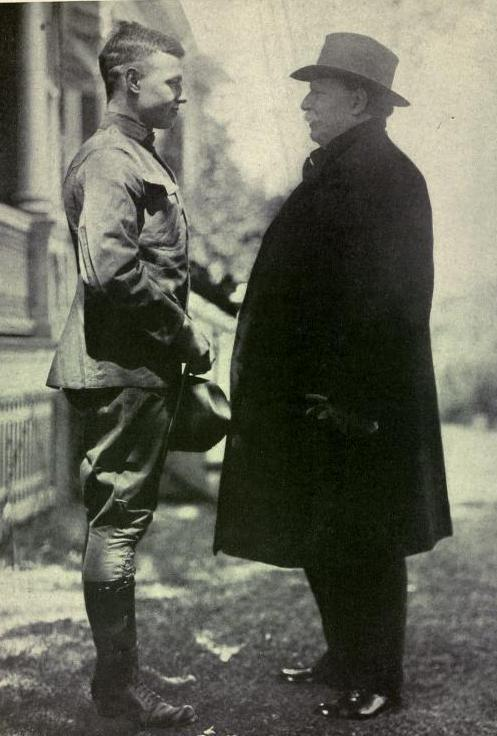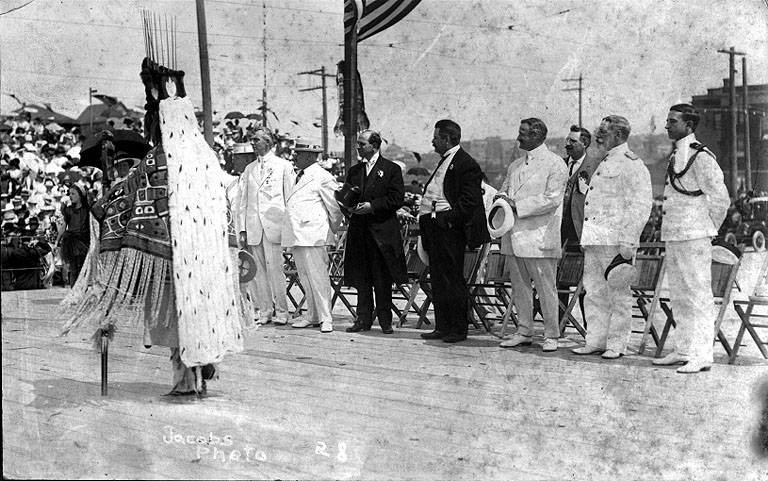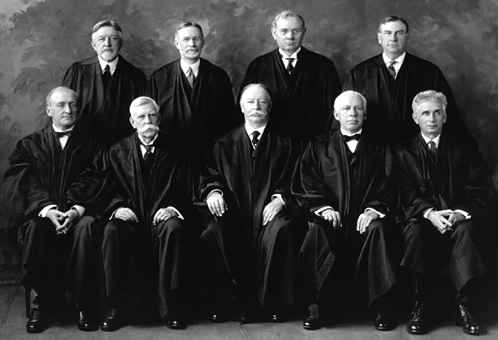
After twelve years of militarized expansion during the McKinley and Roosevelt administrations, Taft's dollar diplomacy efforts were primarily intended to moderate the U.S. interventionist policies of his predecessors. The consequences of those efforts are not very easy to judge. Most historians have deemed Taft’s presidency a failure due to a lack of serious commitment to his own progressive policies. In fact, by the end of his presidency, Taft was regarded primarily as a conservative. To accurately gauge the effects of his foreign policy, though, you have to consider the bigger picture.
The first thing to remember is that the conditions and policies that emerged from the White House during Taft’s administration were largely mandated by Secretary of State Knox, J.P. Morgan, and other corporate interests within Taft’s cabinet. Taft attempted to override these corporate interests during his first year in office, but he was a highly intelligent man who realized that there was nothing he could do to restrict corporate expansion. Moreover, he believed that expansion would benefit the U.S. economy. Taft did not support the immoral use of force, but in a large sense he had little control of this aspect of foreign relations--the residual effect of Roosevelt’s "big stick" approach was that Taft found himself promoting policies that he may not have agreed with. The result was many decades of U.S. military intervention and occupation.
Each of the post-colonial nations in which the United States intervened continued to experience wide-scale social disparities. The majority of the population remained very poor. The real winners were U.S. corporations, the U.S. military administration, and the military rulers of the Latin American nations involved. Many of the citizens in these nations and territories had hoped that the U.S. would lend support to revolutionary activities that were intended to overthrow foreign (or domestic) dictatorships. However, Taft's dollar diplomacy policies instead led to U.S. support for any Latin American leader who was willing to accept U.S. corporate and banking domination of their nation’s infrastructure. If a leader turned out to be a dictator, the U.S. did not trouble themselves about it.

Naturally, the dollar diplomacy and the "big stick" approach led to uniform distrust of the United States throughout Latin America, evidenced quite strongly by the regional Pan-American Conference. Traditionally, this organization had supported U.S. financial interests in the region by promoting foreign capital development. However, by the end of Taft's administration, it viewed him specifically as a threat, citing his dollar diplomacy strategy and its tendency to empower U.S. interests with little regard for the local populations. Making these matters worse, the U.S. invaded Mexico near the end of Taft's administration and caused major damage in Veracruz. A concerted effort was soon underway to resist U.S. commercial influence and intervention. Meanwhile, Taft had ordered two thousand troops to the Mexican border to intervene in Mexico’s post-revolutionary struggle. They were sent primarily to protect U.S. investments and to keep Mexican insurgents from crossing the border into the U.S. However, Taft’s decision to amass troops at the border frightened the American as well as Mexican public, and Congress strongly opposed it.

Although Taft would later become Chief Justice of the Supreme Court, the U.S. media continued to portray him as a child who bore little responsibility for the actions carried out by his administration. His polices themselves were portrayed as ineffectual, and he was described as a weak leader who lacked the ability to drive important decisions in an environment that emphasized corporate rights. Taft's trust-busting efforts had won him few friends, and ultimately he chose to join rather than oppose big business interests.
What was the outcome of William H. Taft's presidency, overall? These questions will help you sum it up.Taft's decisions as president were most significantly effected by
- Roosevelt's "big stick" approach to foreign policy
- McKinley's efforts to keep the U.S. out of wars
- Russian expansion into areas controlled by Japan
- budgetary considerations enforced by Congress
Most fundamentally the policies of dollar diplomacy were directly related to"big stick" policies already implemented.
Most fundamentally the policies of dollar diplomacy were directly related to "big stick" policies already implemented.
Most fundamentally the policies of dollar diplomacy were directly related to "big stick" policies already implemented.
Most fundamentally the policies of dollar diplomacy were directly related to "big stick"policies already implemented.
The most common result of Taft's dollar diplomacy was
- a move toward isolationism
- calls for political reform at home
- confrontation with the Japanese
- U.S. military occupation
Following the failure of economic incentives, the U.S. military frequently intervened in foreign affairs.
Following the failure of economic incentives, the U.S. military frequently intervened in foreign affairs.
Following the failure of economic incentives, the U.S. military frequently intervened in foreign affairs.
Following the failure of economic incentives, the U.S. military frequently intervened in foreign affairs.
The dollar diplomacy policies most commonly were extended to
- railroad workers
- media personalities
- military rulers
- rebel leaders
Almost all of Taft's interventions involved an effort to form relationships with leading military heads of government.
Almost all of Taft's interventions involved an effort to form relationships with leading military heads of government.
Almost all of Taft's interventions involved an effort to form relationships with leading military heads of government.
Almost all of Taft's interventions involved an effort to form relationships with leading military heads of government.
Summary
 Questions answered correctly:
Questions answered correctly:
 Questions answered incorrectly:
Questions answered incorrectly:
